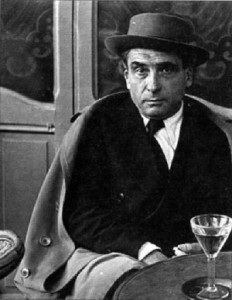 Born in 1889 in Narbonne, Pierre Reverdy was the epitome of the French poet, influenced by the cubist and surrealist movements of the early 20th Century, and given to exploring loneliness and fear for the spiritual side of life. He was once hailed as the ‘greatest poet alive’ by ardent surrealists and he remains an important figure in world literature with his short, often fragmentary verses.
Born in 1889 in Narbonne, Pierre Reverdy was the epitome of the French poet, influenced by the cubist and surrealist movements of the early 20th Century, and given to exploring loneliness and fear for the spiritual side of life. He was once hailed as the ‘greatest poet alive’ by ardent surrealists and he remains an important figure in world literature with his short, often fragmentary verses.
Reverdy grew up on the vineyards of Narbonne, where his father was a wine grower, before moving at the age of 21 to Paris. Intent on making a success of his writing, he rubbed shoulders with the literary greats of the time including Apollinaire, Breton and Tzara.
Five years later he produced his first short collection, Poèmes en prose. Although he was associated with various movements, throughout his life Reverdy would attempt to go his own way, trying to define the simplicity of what he saw as reality.
Whilst most were indulging in the bohemian style of Paris in the early part of the century, Reverdy was more sober, a man given to deep spiritual thought. That didn’t mean he wasn’t prone to extremes or grand gestures – in 1926 he tried to shun the materialism of the world by burning all his works in front of his friends.

He was also famous for having a long relationship with fashion designer Coco Chanel. It was widely known that she was important for his work, providing support and clandestinely purchasing his manuscripts to bolster his paltry finances. Although they never married, he loved her for rest of his life.
Reverdy helped create the magazine Nord-Sud in 1917 which published some of the most well-known literary works of the time as well as more of Reverdy’s verses. Now married, he moved away from Paris to Solesmes where he led a more monastic life with his wife for the next thirty years. It allowed him time and peace to write and he produced works such as Sources du Vent and Le Chant des Morts.
When the Germans invaded France during World War II, Reverdy joined the resistance and, although he had been prolific through most his life, he did not publish anything between 1940 and 1945. Despite being married, he still maintained a great love for Chanel who was called in for interrogation as a possible Nazi spy. Indeed, on his death bed years later, he would write a poem dedicated to her.
His later works became more contracted, eschewing any excess wordage as if he was trying to reveal the simplicity of existence with simple verse. Returning to his home in Solesmes, his works post-war included Tombeau vivant and Cercle doré.
His poetry influenced those in his own country but also a number of American poets such as John Ashbury and Kenneth Rexroth. Reverdy’s work has often been described as ‘simple to the point of austerity’ and his impact on 20th Century literature has been wide ranging and profound.

Although by the time of his death in 1960 he was one of the most respected poets of his generation, Reverdy remained pretty much a recluse late into life. He was buried in Solesmes near to St Peter’s Abbey.

